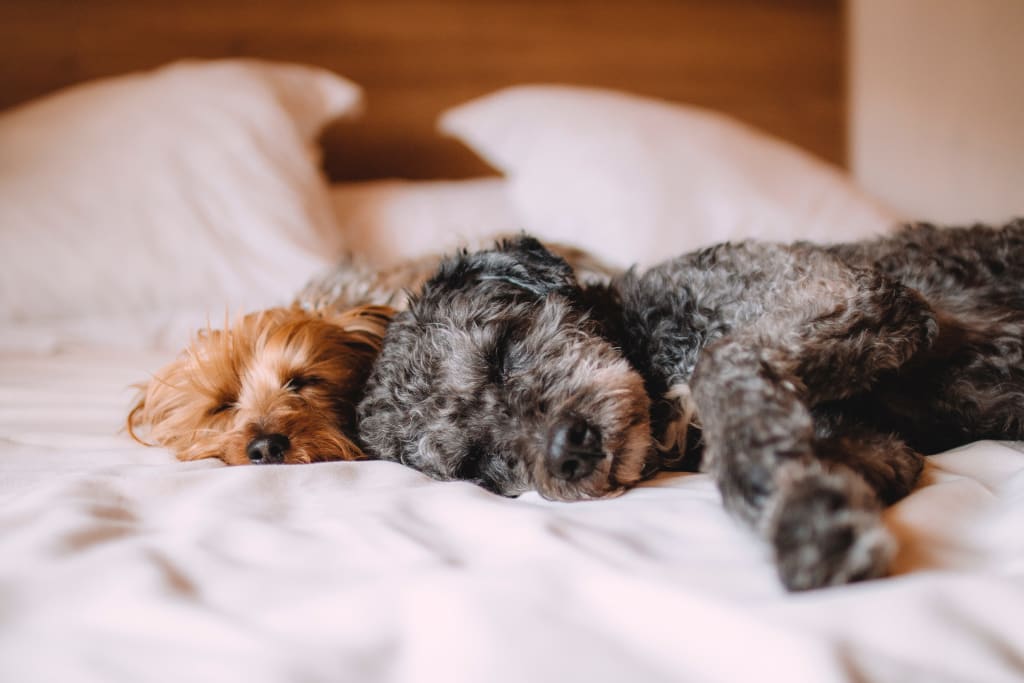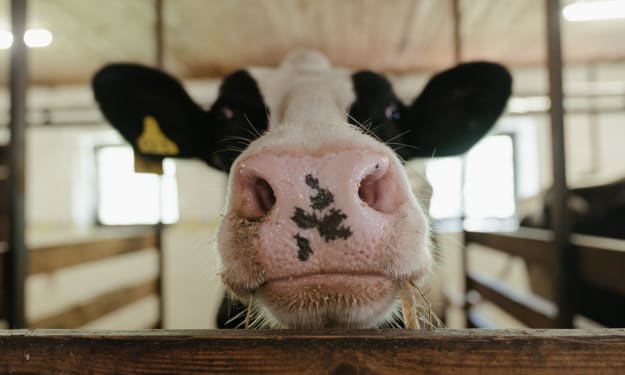Be the Best Pet Sitter
How I Keep A 5-Star Rating on Rover

If you like animals, then pet care can be an enjoyable way to make extra money. I pet sat for many years getting underpaid and struggling to find clients until I found Rover. Rover is a service that does all my advertising for me and it provides insurance so that if anything goes wrong, Rover works to make it right either for me or the pet owner. If I didn’t use Rover, these services would likely cost me more than the 20% that they charge. I am a 5-star pet sitter on the platform; this is how I do it from meet and greet to leaving the animals.
Part 1: Meet and Greet
The first part of a successful pet sitting job is a meet and greet where you get to know the animal or animals, the owner, and talk about your philosophy for pet care. To prepare for this make sure that you are wearing appropriate clothes, this is like a job interview but for a dirty job. Wear comfortable clothes with no holes or inappropriate sayings or logos, wear close-toed shoes that are comfortable to walk in. Be clean, but do not wear perfume or cologne because it can irritate the dogs. If you wear a hat, be prepared to take it off, some dogs don’t like them.
The things that I make sure to do on a meet and greet:
1. Check the temperament of the animal or animals and answer the following questions:
Can I touch their ears, tails, feet, and mouths? Do they have any sensitive spots or sores? Are they aggressive around doors, food, toys, or other animals?
2. Take notes of their regular habits and answer:
Do they have any allergies? What times are they fed and how much? How often do they need to be walked or let out? Do they need medications? Where are the cleaning supplies?
3. Be honest with the owners about what you are and are not willing to do .
4. Set an expectation of how often you will contact them while watching their pets.
5. Let them know if you are or are not willing to work for them. Trust your gut, not every sitter will fit with every pet parent and it’s ok to let them know you are not interested. Some general recommendations:
* Don’t sit for people that choose to speak poorly of someone while you are there, they may be disposed to thinking poorly of others and will probably rate you lower than you deserve.
* Don’t sit for people that have houses or pets that are poorly cared for.
* Don’t sit for people that you have a major personality clash with.
6. The last thing I do is check to see if they have a microwave, which may seem odd but it will make sense soon.
2. Preparation
There is an old adage that 'success follows preparation' and I find this to be true in most aspects of my life; pet sitting is no exception. Some characteristics of pet sitting mimic a vacation, others are quite different.
Questions to plan out: What am I going to wear? What am I going to eat? What am I going to do during downtime? How am I going to care for my physical needs while I am gone?
Here is what I pack divided into toiletries, clothing, food, portable gym, entertainment.
Toiletries:
*Travel size toothbrush, toothpaste, and a small size mouthwash.
*Travel size of QTips
*Nail Clippers
*Comb (if my hair is long enough to require it)
*Towel
*Travel size shampoo
*Deodorant
*Personal medication in a travel case
*Small toiletries travel case
Clothing:
I use sets of three and then wash them through the time I am gone. When choosing my clothing, I choose the lightest weight options that will cover the biggest areas with consideration to the local temperature. I wear one set and put the other two in a backpack
Three: shirts, pairs of shorts or pants, underwear, pairs of socks.
One hat.
Food:
I prefer to use as few dishes while I am at other people’s houses as possible because it allows me to keep their houses cleaner. Typically, I will plan to eat out or prepare meals in advance and put the meals in the fridge or freezer depending on the length of the stay.
My usual breakfast is chia pudding or overnight oats, a bag of nuts or a bag of dried fruit chips for a snack, and a preprepared meal for dinner the contents of which depend heavily on whether they have a microwave or not.
Portable Gym Equipment:
I am pet sitting away from home on average two to three weeks a month but want to take care of my body. I have two methods that I use; a regimented personal exercise program, and workout videogames on the Nintendo switch. The gym that I bring with me offers maximum flexibility with as little weight as possible. These are the items I bring:
*12-inch foam roller
*Portable yoga mat/towel hybrid
*Jump rope
*Foot massager ball
*One exercise band (resistance weight depends on my current program)
Altogether the weight of my portable gym is about 5 pounds and roughly half the size of my clothing.
Entertainment:
Lastly, animals sleep a lot of the time, so it is a huge benefit to planning what you will do during downtime. Some people will like to watch tv or movies, I prefer to do other things.
I always bring a Nintendo Switch, because it can be exercise or entertainment depending on the program.
I bring either a laptop to write or a non-messy art project like a drawing pad.
*Phone charger- not only is there a lot of things that a phone can do, but it will also be your primary source of contact with your client so a charger is a must.
I pack everything but food the night before and run through a checklist. Food I pack last before I head out to pet sit.
3. The Job
At this point, you already know what the schedule for the animals is, so the job is following the schedule while taking care of your needs at the same time. Balancing it all requires a lot of flexibility but there are a few general rules that I follow to make this time go smoothly.
*Let the pet parents know when you get there.
*Keep your eyes and ears on the animals as much as possible; learn and watch for signs of stress or illness and take action as soon as you notice anything.
*Within reason, play when they want to play. Take care of your needs when they are resting or when it is convenient to care for both.
Most animals are fed twice a day, so in a general day I will:
*Wake up when animals need fed, usually between 5 and 7 am, and feed them and refresh their water.
*If needed, take them out for a walk, let them out to potty, or clean the litterbox.
*Exercise for 15-30 minutes
*Take a shower
*Eat breakfast and take meds
*Spend the bulk of the day with an 'animals first' mentality, making sure that they are playing with appropriate items, not being destructive, and getting the playtime they need before anything else. I will interchange those with personal activities such as video games, writing, or drawing when the animals are resting or sometimes playing by themselves. I will keep my phone close in case the animals do anything cute or fun and send pictures to their owners. If the pets are naughty, I take immediate action to correct them.
*Around 5-6 PM is typically second feeding
*If it is a dog, I will take them for a walk or let them out to potty again.
*After dinner they typically play a little more and I write a message about their activities of the day to their owner. Be honest when you write to the pet parents; tell them the fun things, but also tell them if the pets were less than angelic, and what steps you took to fix the problem.
*Go to bed and prepare for another day
*The last day I am there I make sure to get the house at least as clean as it was when I got there. I wash the counters, sweep the floors, possibly mop, and let the pet parents know when I have left and what I did before I had left.
For the most part, pet sitting is fun and easy. I get to meet a lot of animals and my levels of communication keep my clients happy. There are a few additional pieces of advice that help you keep and grow your business:
*Price competitively- figure out what the general price is in your area and set your prices near that, but if you have a lot of experience or knowledge of pet health; charge for it. You know your worth, find the people that are willing to pay for it.
*If a client finds you through a service such as Rover, book them through that service. It protects your private information and failure to do so could cause them to remove you as a sitter from their service; don’t risk your long-term business for a few extra bucks now.
*Do not rely on or ask for tips. Some people will offer them or ask about them in the meet and greet, always take the stance that ‘it is appreciated but not necessary.’ This adds legitimacy to your business.
*Keep a learner’s mindset and seek out new information on animals, their behavior, anatomy, and breed dispositions. Knowledge can be a great boon in setting you apart.
*Always remember you are there for the animal; put their needs and wants before your own.
I have used this method of interaction with all of my clients, and have managed to build a strong business, with reviews that demonstrate consistency and professionalism. I get more work than I can take, and turn away as many clients as I accept. With this information, I hope that others can become the best sitters that they can be.
About the Creator
Enjoyed the story? Support the Creator.
Subscribe for free to receive all their stories in your feed. You could also pledge your support or give them a one-off tip, letting them know you appreciate their work.






Comments
There are no comments for this story
Be the first to respond and start the conversation.